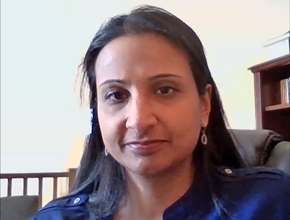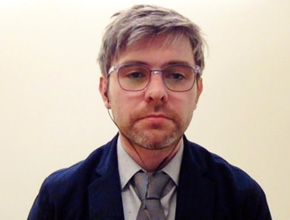This transcript was edited on February 7, 2020.
Dr Nishma Singhal, associate professor in the Divisions of Infectious Diseases and General Internal Medicine at McMaster University, talks to Dr Roman Jaeschke about 2019 novel coronavirus (2019-nCoV) and developments from the past week.
For the February 14 update, click here. For the January 28 update, click here.
Roman Jaeschke, MD, MSc: Good afternoon. Welcome to another edition of McMaster Perspective and another meeting with Doctor Nishma Singhal.
Doctor Singhal, we recorded an interview 6 days ago. The situation with novel coronavirus (2019-nCoV) seems to be evolving fast. What has changed and what has remained the same over this week?
Nishma Singhal, MD: The number of cases that have been reported in terms of individuals who have been found to be positive for 2019-nCoV has rapidly escalated. We now have over 26,000 confirmed cases.
There have been more cases outside of China, but they’re around 178 or so, so still fairly limited.
The number of deaths has increased to 425, with 2 deaths reported outside of China at this point. But the majority still is in Wuhan or Hubei province, within China.
Overall the morality rate, based on the cases that we know, has remained similar and is around 1.6% to 2%, but the number of cases has rapidly increased. That being said, the vast majority are still within China, or more specifically, within Hubei province, although cases have been reported in every province in China at this point.
Roman Jaeschke: You mentioned the mortality rate has remained around 2%, right?
Nishma Singhal: Approximately 2%, based on what we know. Potentially a little bit less based on the numbers that are [not] being reported. But [the mortality rate] is based on reported and confirmed cases. There’s still a number of individuals that are under investigation, they’re suspected cases, and as I understand there are hundreds of thousands in China that are under surveillance.
Roman Jaeschke: So what’s the situation in Canada today?
Nishma Singhal: To date there’s only been 4 reported cases in Canada. There’s been no local transmission within the country. There’s been 3 cases in Ontario: 2 in Toronto, which was a pair of husband and wife, and 1 in London, Ontario. And then 1 in Vancouver, British Columbia.
I think the risk to Canadians at this point remains low. There’s still more respiratory [infections] like influenza and things that are local. All of the cases have been people who travelled to China, or specifically to Hubei province.
I think that within Canada we need to remain vigilant and continue to monitor the situation. Like I mentioned in the previous report [see Novel coronavirus. January 28 update], if you have travelled and become symptomatic, make sure you contact either your health-care provider or local public health authority to let them know about the situation and self-isolate at home. But the risk to the general population in Canada at the moment remains low.
Roman Jaeschke: So it’s presumably low in other countries where travel back and forth to and from China is not that common.
Are there any misconceptions that need to be dispelled? Are there any events worth describing?
Nishma Singhal: Even the World Health Organization (WHO) is trying to dispel myths around the coronavirus.
Not everyone who is of Asian or Chinese descent is automatically going to be at risk. It really requires that travel to China, or even more specifically to Hubei province, at this point. So I don’t think there’s reason to panic for Canadians who are living in Canada and are in contact with other people.
Again, in terms of direct transmission outside of Wuhan or Hubei province, the cases have been in close contacts of people who are confirmed and symptomatic. So walking through the mall or airport and passing someone who potentially may be in the incubation period is not going to result in infection or disease at this point.
Roman Jaeschke: So it’s almost a week later, the number of cases is markedly larger, the mortality remains relatively low. It may be worth reminding that in severe acute respiratory syndrome (SARS) I believe it was around 10% and in the Middle East respiratory syndrome (MERS), about 40%. We are dealing here with a mortality rate of around 2%. Let’s hope that the number of cases will not go up dramatically and that the mortality remains reasonably manageable. Obviously every person dying is a major event, but from the population perspective 2% sounds less alarming than what it could be otherwise.
How about if we talk again in a few days from now?
Nishma Singhal: Sounds good.
Roman Jaeschke: Thank you very much.
Nishma Singhal: No problem.
 English
English
 Español
Español
 українська
українська









